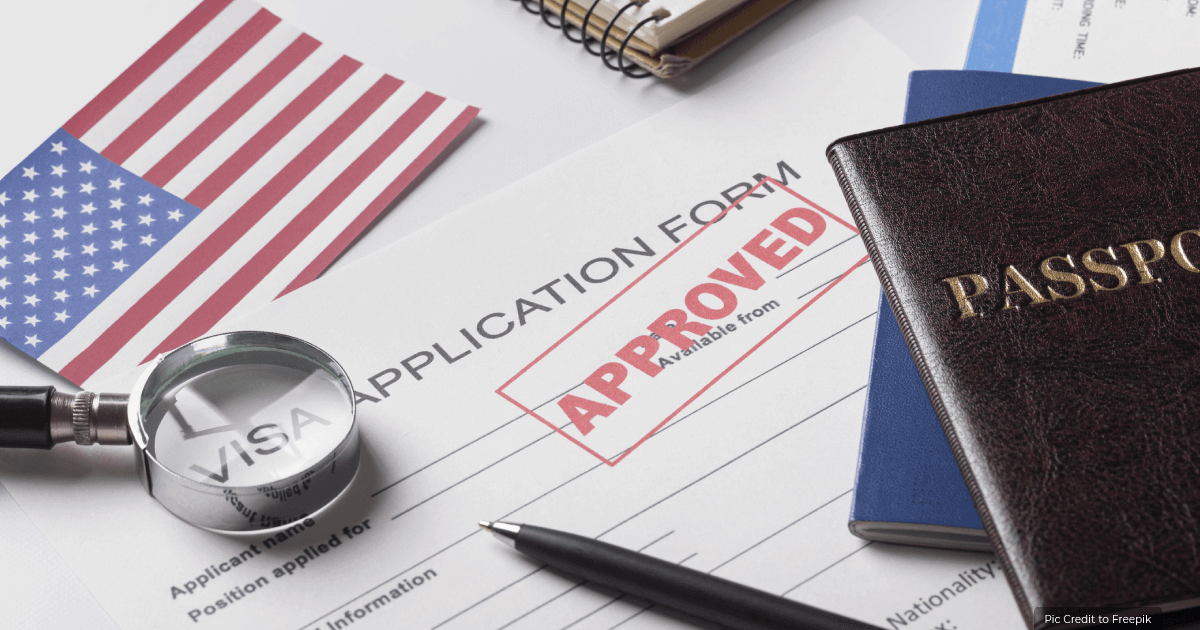Navigating the Student Visa Process for the USA: Your Ultimate Guide
The process of obtaining a student visa to study in the United States can be complex and overwhelming, but with the right information and guidance, it is entirely manageable. The first step in the process is to understand the different types of student visas available. The most common type of student visa is the F-1 visa, which is for academic students enrolled in a full-time program at an accredited educational institution. There is also the M-1 visa, which is for vocational or non-academic students.
Once you have determined which type of visa you need, you will need to apply to and be accepted by a Student and Exchange Visitor Program (SEVP)-certified school in the United States. This school will issue you a Form I-20, which you will need to apply for your student visa. It is important to note that the process for obtaining a student visa can vary depending on your country of origin, so it is crucial to research the specific requirements for your country.
After understanding the different types of student visas and the requirements for your specific country, the next step in the process is to gather all necessary documentation and complete the required forms. This may include proof of acceptance to a SEVP-certified school, proof of financial support, a valid passport, and a completed Form DS-160, Online Nonimmigrant Visa Application. It is important to carefully review all documentation requirements and ensure that everything is completed accurately and in a timely manner. Once all documentation is gathered and forms are completed, you can move on to scheduling your visa interview at the nearest U.S. embassy or consulate. It is important to note that visa processing times can vary, so it is crucial to start the process as early as possible to avoid any delays in obtaining your student visa.
Researching and Choosing a Designated School
Choosing the right school is a crucial step in the process of obtaining a student visa to study in the United States. It is important to research and select a SEVP-certified school that meets your academic and personal needs. When researching schools, it is important to consider factors such as location, program offerings, campus culture, and support services for international students. Additionally, it is important to ensure that the school you choose has a strong track record of supporting international students and assisting them with the visa process. Once you have narrowed down your list of potential schools, it is important to reach out to each school’s international student office to gather more information and ask any questions you may have about the visa process and student life at the school.
After researching and gathering information about potential schools, the next step is to apply and be accepted by a SEVP-certified school. This process may involve submitting an application, providing academic transcripts and test scores, and possibly participating in an interview. It is important to carefully review each school’s application requirements and deadlines to ensure that you submit a complete and competitive application. Once you have been accepted by a school, they will issue you a Form I-20, which is a crucial document for applying for your student visa. It is important to carefully review the information on your Form I-20 and ensure that all information is accurate before moving on to the next steps in the visa process.
Completing the Online Visa Application
Once you have been accepted by a SEVP-certified school and have received your Form I-20, the next step in the student visa process is to complete the Online Nonimmigrant Visa Application (Form DS-160). This form collects biographical information about you and your intended stay in the United States, as well as information about your travel plans and any previous U.S. travel history. It is important to complete this form accurately and honestly, as any discrepancies or inaccuracies could result in delays or denials in the visa process. Additionally, it is important to have all necessary documentation on hand when completing this form, as you will need to reference information from your Form I-20 and other supporting documents.
After completing the Online Nonimmigrant Visa Application, you will need to pay the non-refundable visa application fee. The fee amount can vary depending on your country of origin and the type of visa you are applying for, so it is important to check the specific fee amount for your situation. Once the fee is paid, you will receive a receipt with a unique barcode that you will need to schedule your visa interview. It is important to keep this receipt safe and bring it with you to your interview, as it will be required for entry into the U.S. embassy or consulate.
Scheduling and Attending the Visa Interview
After completing the Online Nonimmigrant Visa Application and paying the visa application fee, the next step in the student visa process is to schedule and attend a visa interview at the nearest U.S. embassy or consulate. It is important to schedule your interview as soon as possible after completing your application and paying the fee, as visa processing times can vary depending on your country of origin. Additionally, it is important to carefully review the specific requirements for scheduling an interview at your local embassy or consulate, as these requirements can vary.
When attending your visa interview, it is important to be prepared and present yourself professionally. This may include dressing appropriately, bringing all necessary documentation, and being prepared to answer questions about your academic plans and intentions in the United States. It is important to be honest and forthcoming during your interview, as any discrepancies or inaccuracies could result in delays or denials in the visa process. Additionally, it is important to be prepared for potential questions about your financial support and ties to your home country, as these are common areas of inquiry during visa interviews.
Preparing for Arrival in the USA
After successfully completing your visa interview and being approved for a student visa, the next step in the process is to prepare for your arrival in the United States. This may include arranging travel plans, securing housing accommodations, and familiarizing yourself with your new school’s campus and resources for international students. Additionally, it is important to review any orientation materials provided by your school’s international student office and prepare for any required placement exams or academic advising sessions.
It is also important to consider any cultural adjustments you may need to make when arriving in the United States. This may include familiarizing yourself with American customs and etiquette, as well as preparing for potential language barriers if English is not your first language. Additionally, it may be helpful to connect with other international students at your school or in your area to build a support network and share experiences as you adjust to life in a new country.
Understanding Visa Regulations and Requirements
Once you have arrived in the United States on your student visa, it is important to understand and comply with all visa regulations and requirements. This may include maintaining full-time enrollment at your school, keeping your Form I-20 up-to-date with accurate information, and reporting any changes in your academic program or personal information to your school’s international student office. Additionally, it is important to familiarize yourself with any restrictions on employment or internships while on a student visa, as violating these regulations could result in serious consequences.
It is also important to stay informed about any changes or updates to U.S. immigration policies that may impact international students. This may include changes in visa processing times or requirements, as well as potential changes in government policies that could impact international students’ ability to study or work in the United States. Staying informed about these developments can help you navigate potential challenges or changes in immigration policies that may impact your status as an international student.
Resources for International Students
As an international student studying in the United States, there are many resources available to support you throughout your academic journey. This may include resources provided by your school’s international student office, such as academic advising, cultural adjustment support, and assistance with immigration regulations and requirements. Additionally, there are many community organizations and support groups that cater specifically to international students, providing opportunities for networking, mentorship, and social activities.
It is also important to take advantage of resources provided by U.S. government agencies such as the U.S. Department of State and U.S. Citizenship and Immigration Services (USCIS). These agencies provide valuable information about immigration policies and regulations that may impact international students, as well as resources for reporting any issues or concerns related to your status as an international student.
Read Also: The Step-by-Step Process of Transferring Universities in the USA for International Students
Conclusion
Obtaining a student visa to study in the United States can be a complex process, but with careful planning and preparation, it is entirely manageable. By understanding the different types of student visas available, researching and choosing a designated school, completing the online visa application, scheduling and attending the visa interview, preparing for arrival in the USA, understanding visa regulations and requirements, and utilizing resources for international students, you can navigate the student visa process with confidence and ease. With proper guidance and support from schools, government agencies, and community organizations, international students can thrive academically and personally during their time studying in the United States.







